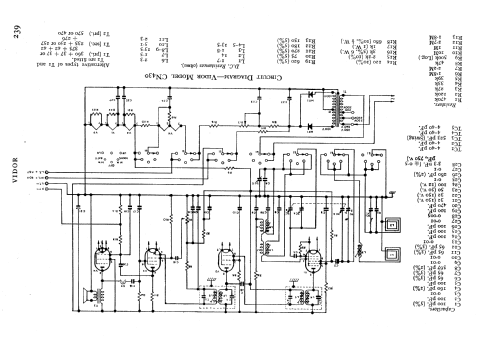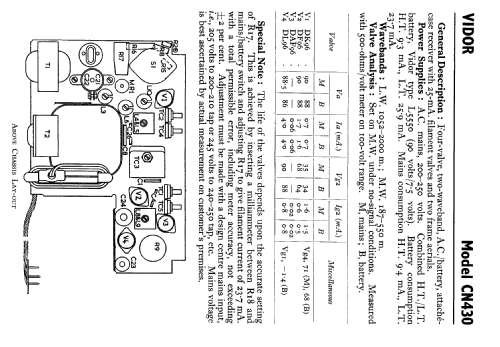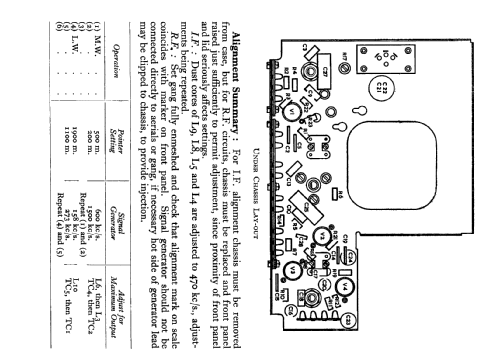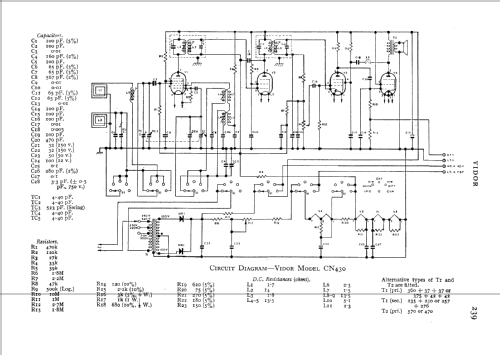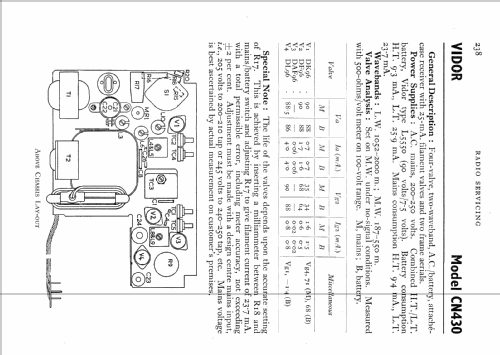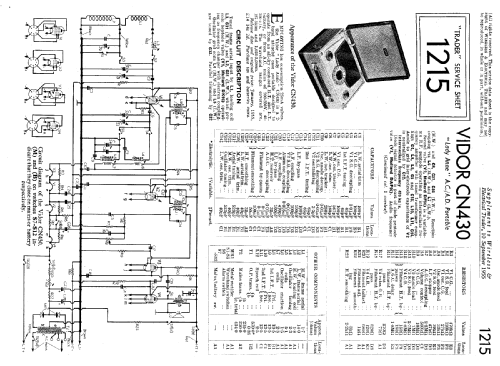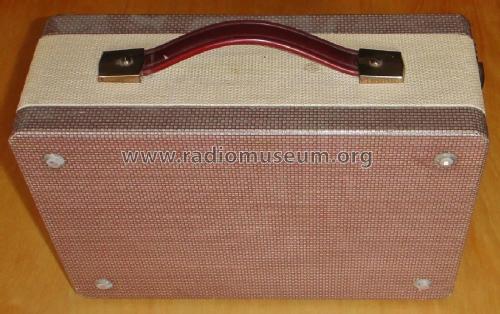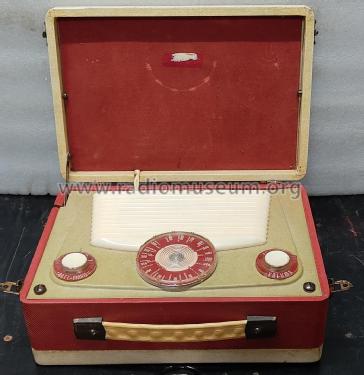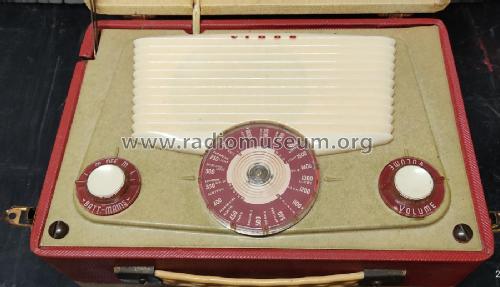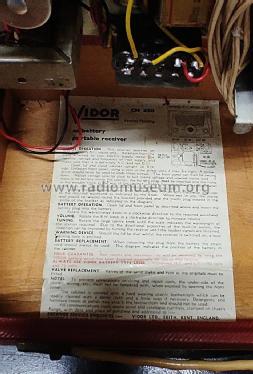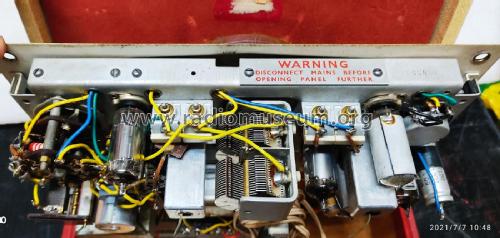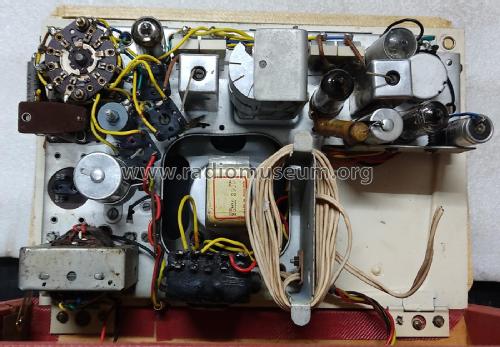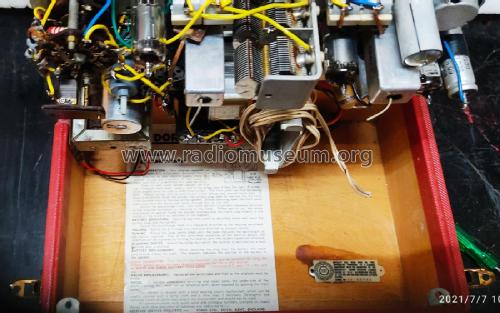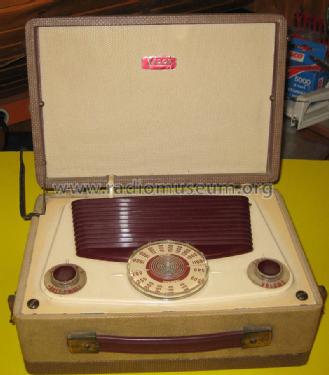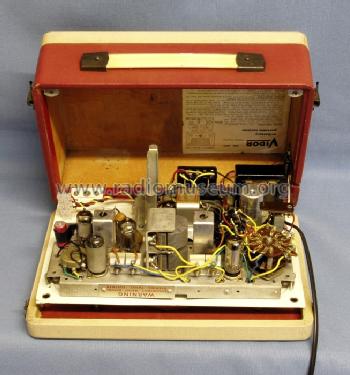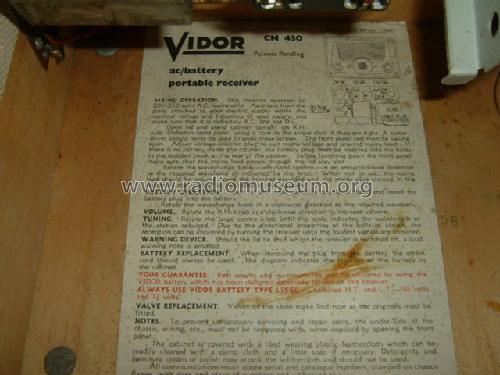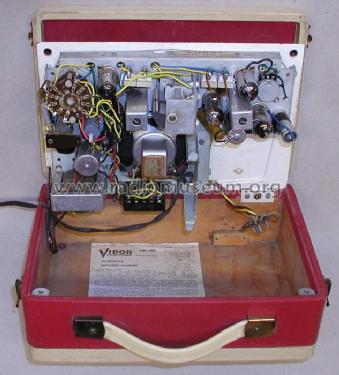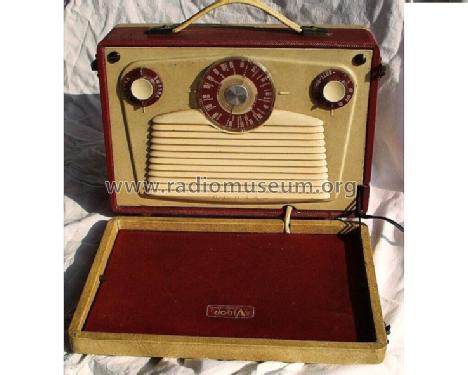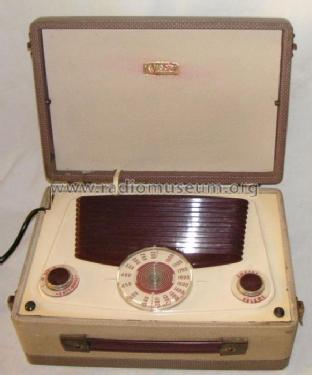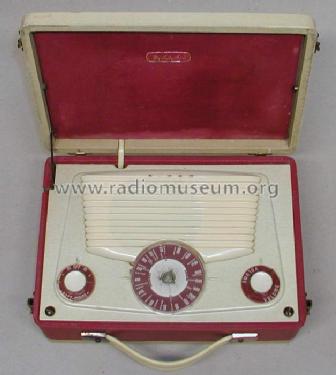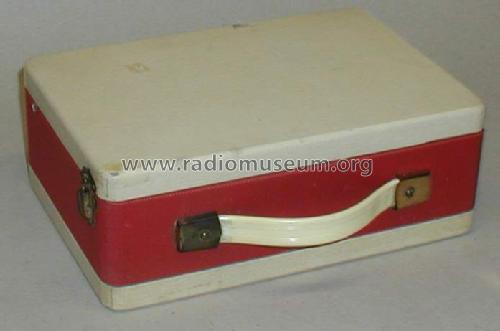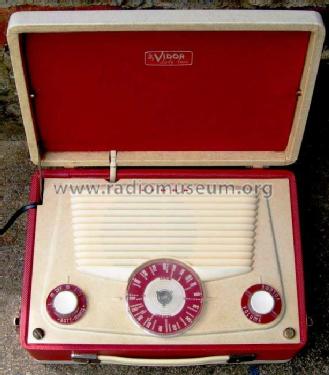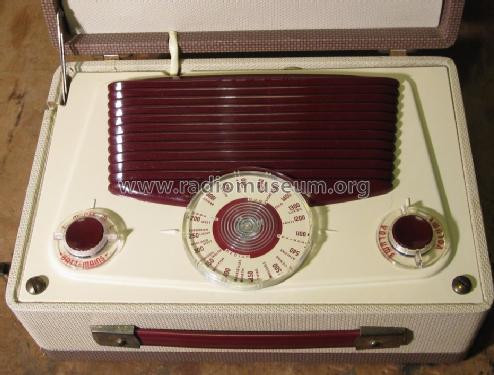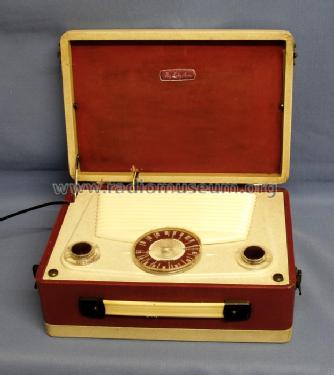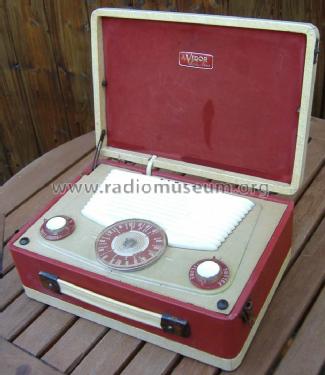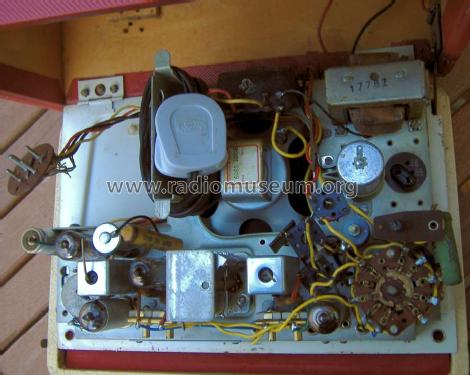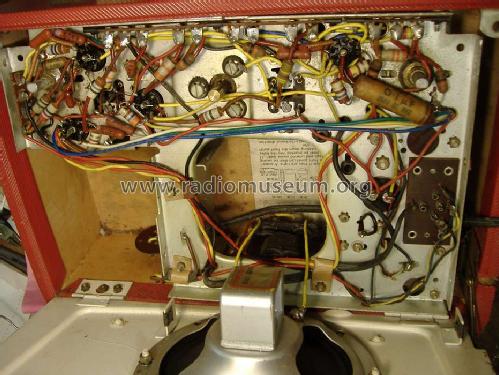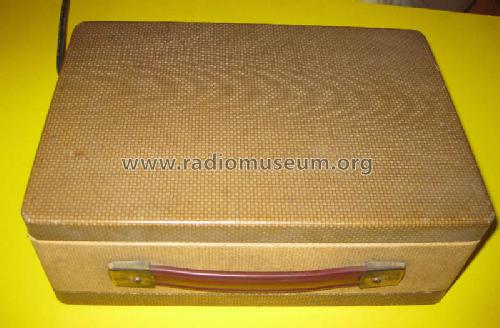My Lady Anne CN430
Vidor Ltd.; Erith (Kent)
- Country
- Great Britain (UK)
- Manufacturer / Brand
- Vidor Ltd.; Erith (Kent)
- Year
- 1955
- Category
- Broadcast Receiver - or past WW2 Tuner
- Radiomuseum.org ID
- 74815
Click on the schematic thumbnail to request the schematic as a free document.
- Number of Tubes
- 4
- Main principle
- Superheterodyne (common)
- Tuned circuits
- 6 AM circuit(s)
- Wave bands
- Broadcast (MW) and Long Wave.
- Power type and voltage
- Line / Batteries (any type) / 200-250 or 7.5 & 90 Volt
- Loudspeaker
- Permanent Magnet Dynamic (PDyn) Loudspeaker (moving coil)
- Material
- Leather / canvas / plastic - over other material
- from Radiomuseum.org
- Model: My Lady Anne CN430 - Vidor Ltd.; Erith Kent
- Shape
- Portable set > 8 inch (also usable without mains)
- Dimensions (WHD)
- 290 x 118 x 200 mm / 11.4 x 4.6 x 7.9 inch
- Notes
-
Im Deckel eingebaute Rahmenantenne./ Frame aerial in the lid.
Earlier official Vidor L5546 battery using "W" connector is slightly different in size (3" x 3.5" x 3.5") to Vidor L5550 /Ever Ready B148 (2.75" x 3.5" x 3.5") But GEC does suggest the BB548 (=B148 & L5550). Later models do list Vidor battery L5550 in case.
Space to wind mains flex.
Lid switch "howls" to remind you rather than switching off power.
The tuning knob has a screw clamp under the chassis plate, accessible from front edge, but the other knobs are "push on" (lever from under side to avoid breakage).
Metal Rectifier and Isolated mains transformer but resistive dropper from HT for LT.
- Net weight (2.2 lb = 1 kg)
- 3.5 kg / 7 lb 11.3 oz (7.709 lb)
- Price in first year of sale
- 14.00 £
- Literature/Schematics (1)
- Trader Service Sheet (suppl. of Wireless & El. Trader, etc.) (Nr. 1215, 10 September 1955)
- Literature/Schematics (2)
- Radio And Television Servicing books (R&TVS) (Pages 238-240)
- Author
- Model page created by Bernd P. Kieck. See "Data change" for further contributors.
- Other Models
-
Here you find 146 models, 77 with images and 75 with schematics for wireless sets etc. In French: TSF for Télégraphie sans fil.
All listed radios etc. from Vidor Ltd.; Erith (Kent)
Collections
The model My Lady Anne is part of the collections of the following members.
Forum contributions about this model: Vidor Ltd.; Erith: My Lady Anne CN430
Threads: 1 | Posts: 1
habe gerade ein solches Gerät repariert.
Der AÜ ein EI42 war defekt. Es läßt sich ohne Probleme ein beschaffbarer M42 einbauen.
Noch ein Tipp. Die Knöpfe lassen sich leicht entfernen, wenn ein langer Schraubenzieher unter
dem Chassis mit drückt.
Der Senderknopf ist mit einer Schelle auf der Drehkoachse festgeschraubt, die Schraube
erreicht man unterhalb des Chassis durch eine Öffnung.
Die wieder erreichte Leistung des Radios ist erstaunlich.
Gruß Klaus
Klaus Bayer, 16.Jun.06
